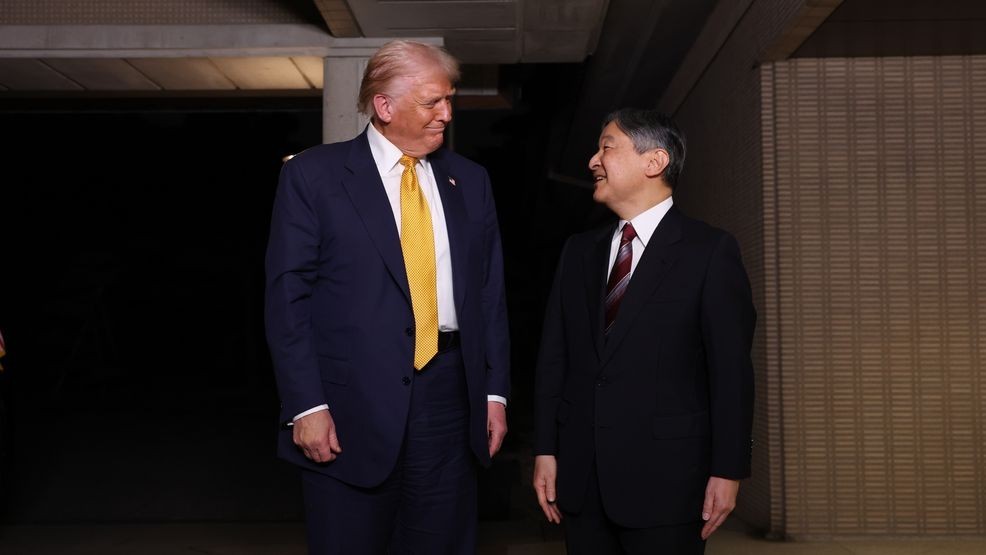Listen to the article
A potential breakthrough in the long-running trade dispute between the United States and China appears imminent as Treasury Secretary Scott Bessent indicated a deal could be signed during President Donald Trump’s upcoming Asia trip. This development may signal a pivotal shift after an extended period of economic friction between the world’s largest economies, which has inflicted significant damage on both sides through sweeping tariffs that have disrupted global trade patterns and increased costs across supply chains.
The United States currently imposes a minimum 10% tariff on virtually all imports, a baseline measure implemented in April, according to White House officials. However, the tariff landscape varies dramatically depending on the trading partner. Data from the Tax Policy Center reveals that nations like India and Brazil face approximately 50% tariffs when all additional charges are considered. China remains a particular focus of U.S. trade policy, with new 100% tariffs on Chinese cargo-handling equipment scheduled to take effect on November 9.
This situation could transform dramatically depending on the outcome of this week’s trade negotiations and an impending Supreme Court decision on presidential tariff authority, which could be announced as early as next week.
America’s closest allies have managed to secure more favorable trading terms amid the broader tariff regime. The United Kingdom, under the U.S.-U.K. Economic Prosperity Deal, maintains the lowest tariff rate at 10%. Japan negotiated a better position in September, with most of its exports subject to 15% tariffs – higher than previous levels but substantially below the rates imposed on countries like India and Brazil.
While the Tax Policy Center estimates these tariffs will generate approximately $2.5 trillion in revenue over the next decade, economists caution that the average American family could face additional costs of around $2,600 annually as importers pass these expenses on to consumers.
The current trade tensions have deep historical roots. When China joined the World Trade Organization in 2001, the arrangement was widely viewed as mutually beneficial. The United States gained access to lower-cost goods, while American companies anticipated opportunities in China’s expansive market. However, the relationship gradually became unbalanced.
China’s manufacturing sector experienced explosive growth, outpacing American factories and triggering what economists termed the “China Shock” – a period that saw millions of U.S. manufacturing jobs disappear as production shifted overseas. Between 1999 and 2011, nearly 6 million factory positions were eliminated, with approximately 1 million directly attributed to Chinese competition, according to the Council on Foreign Relations.
The situation escalated dramatically in 2018 when the Trump administration implemented Section 301 tariffs targeting $350 billion worth of Chinese imports. The Office of the United States Trade Representative cited intellectual property theft, forced technology transfers, and unfair state subsidies as justifications. China responded with retaliatory tariffs, igniting a trade war that continues to impact global markets today.
Despite the ongoing friction, China remains an essential trading partner for the United States, accounting for roughly 13% of all American imports. While tariffs have boosted federal revenue, they have also created ripple effects throughout supply chains, increasing prices across numerous sectors from electronics to industrial machinery.
Bessent confirmed on social media platform X that negotiators have established a framework for a potential trade agreement ahead of President Trump’s meeting with Chinese President Xi Jinping on Thursday. This timing is crucial as both nations seek economic stability amid global uncertainties.
The implications of these developments are significant. A successful agreement could ease years of tension and stabilize critical supply chains that have been disrupted by the trade war. Conversely, if negotiations collapse or the Supreme Court challenges presidential trade authority, the global economic landscape could face another major restructuring, with far-reaching consequences for businesses and consumers worldwide.
Verify This Yourself
Use these professional tools to fact-check and investigate claims independently
Reverse Image Search
Check if this image has been used elsewhere or in different contexts
Ask Our AI About This Claim
Get instant answers with web-powered AI analysis
Related Fact-Checks
See what other fact-checkers have said about similar claims
Want More Verification Tools?
Access our full suite of professional disinformation monitoring and investigation tools




10 Comments
The scale of the tariffs and their impact on supply chains is staggering. A resolution would be welcome news for commodity producers and consumers alike. I’m curious to see how the negotiations unfold in the coming days.
Absolutely. The fallout from the trade war has been significant, so any progress towards normalizing relations would be a positive development.
This potential trade agreement is a complex issue with a lot of moving parts. I’m a bit skeptical that it will be a true ‘breakthrough’ given the deep tensions, but I’m glad to see progress being made.
I share your cautious optimism. Even a partial deal could be an important step, but the details will determine the real impact.
This is a high-stakes situation that could have major ramifications for the global economy and commodity markets. I’ll be closely following the news to see how the negotiations play out and what the implications might be.
Same here. It’s an important story to watch closely, given the potential impacts on mining, energy, and related sectors.
The tariffs have certainly disrupted global trade, as the article mentions. I wonder how a deal could reshape the landscape for commodities like copper, lithium, and uranium that are important inputs for green energy infrastructure.
Good point. A resolution to the trade dispute could bring more stability and predictability to those critical commodity markets.
Interesting to see the potential for a US-China trade deal. It could have major implications for global supply chains and commodity markets. I’m curious to see how the negotiations play out and what the final terms might look like.
You’re right, this is a high-stakes situation that could significantly impact mining, metals, and energy sectors. The details will be crucial.